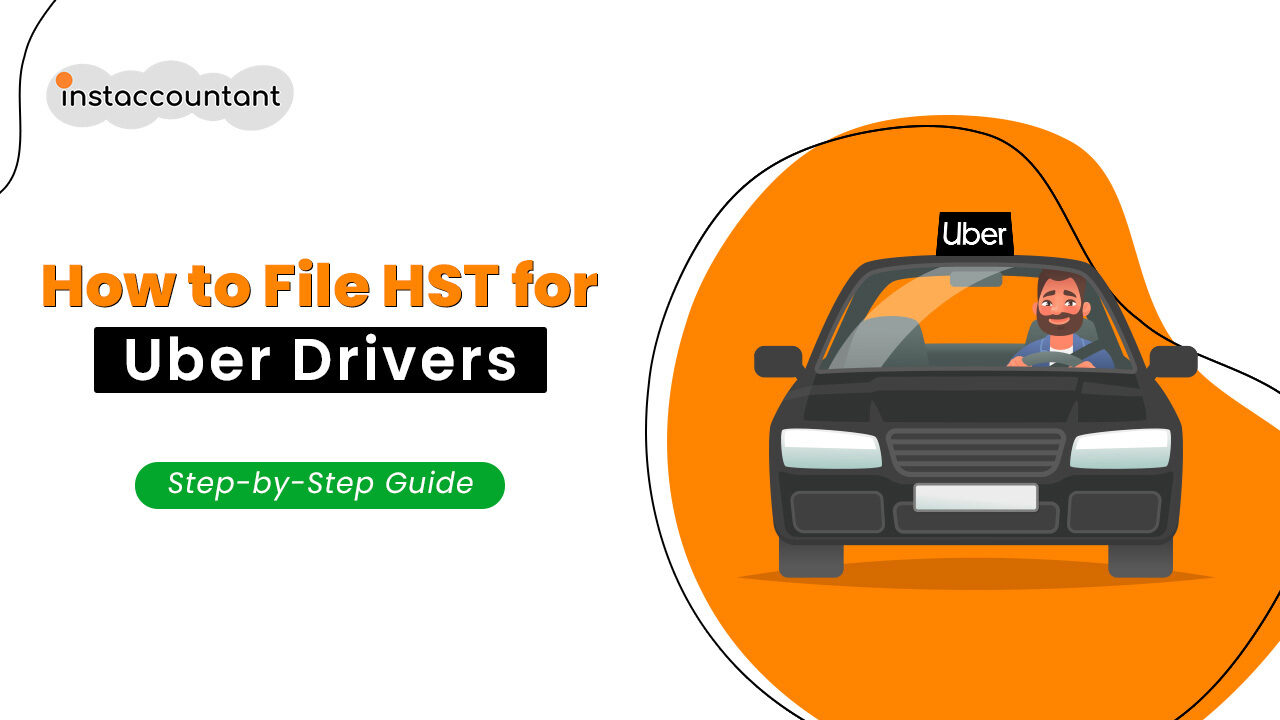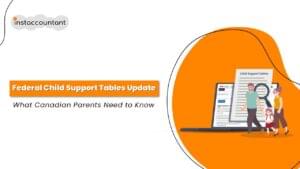If you’re an Uber driver in Canada, handling HST (Harmonized Sales Tax) for your income is a big responsibility, but we’re here to help you understand it. HST is a mix of federal GST (Goods and Services Tax) and provincial sales tax, and it applies to most things you buy and sell. This guide is your roadmap to mastering HST for Uber drivers in Canada, from registration and remittance to filing and claiming deductions. We’ll break down the steps, answer your questions, and ensure you stay compliant with the CRA.
What is HST in Canada?
The Harmonized Sales Tax (HST) is a combination of federal and provincial taxes on goods and services in five Canadian provinces. In Ontario, the HST rate is 13%, and the Canada Revenue Agency (CRA) administers and collects the HST on behalf of the Government of Ontario.
Tax Obligations of Uber (Rideshare) Drivers in Canada
As an Uber, Lyft, Uride, or any rideshare driver in Canada, understanding how to handle your income tax and HST (Harmonized Sales Tax) is important. Given that this can often seem daunting to those new to the trade, I’ll guide you through the step-by-step process of registering and filing HST for Uber drivers, focusing on tracking your income and expenses for HST purposes.
Firstly, when you work as an Uber driver in Canada, you’re essentially your own boss, managing your own business. This means you’re responsible for handling your income tax and HST. Uber will give you a tax summary, usually through the Uber Partner Portal or Uber Driver app. It’s important to report all your income from Uber on your tax return, including fares, tips, and bonuses.
As an independent contractor, you need to fill Form T2125 (Statement of Business or Professional Activities) to report your earnings and expenses. If you also have a regular job, you might receive a T4 form from your employer.
Key Steps for Filing HST for Uber Drivers in Canada
Step 1: HST Registration for Uber Drivers
According to the Canada Revenue Agency (CRA), all commercial ride-sharing service drivers, whether they work full-time or part-time with Uber in Canada, must register for a GST/HST number within 30 days of their first trip. This means that every fare charged by a ride-share driver is subject to GST/HST. The rate of GST/HST that needs to be charged and collected depends on the province where the ride takes place.
It’s important to note that registering for a GST/HST number is necessary for all rideshare drivers in Canada, regardless of how much income you earn. This registration allows drivers to claim back any GST/HST paid on your business expenses and only remit the net amount to the CRA.
Each week, Uber provides you with the GST/HST collected from your trips. This information appears on your weekly earnings statement and your monthly and annual Tax Summary.
Step 2: Register for an GST/HST Number
When registering for a GST/HST number for Uber, it’s essential to meet specific eligibility conditions, such as having a valid Social Insurance Number (SIN) and having filed an income tax return with the Canada Revenue Agency (CRA). The HST registration process can be completed through the CRA website or with the assistance of a tax professional. Once registered, it’s important to keep the GST/HST number handy, as it will be required for filing taxes and issuing receipts if requested.
To register for a business number and GST/HST account number, the following information should be readily available:
- Your Social Insurance Number (SIN)
- Your home and mailing address, including the postal code
- The date you started driving with Uber.
- Reasonable estimate of your projected yearly earnings.
If you’re already registered for a GST/HST account for your Uber, Lyft or any ride-share income, there’s no need to go through the registration process again. However, if you have a GST/HST account for another type of business in Canada, you may need to make updates to your Business Account.
Step 3: Track Your Ride Income Accurately
Each ride you complete with Uber generates income that’s subject to taxation. Uber Canada provides a tax summary that breaks down your gross earnings and HST collected over the year. This tax summary serves as the foundation for the HST report and should be reviewed thoroughly to ensure accurate tax reporting.
Uber tax summary includes essential details such as the total earnings (gross fares), sales tax (HST) collected on each trip, sales tax (HST) paid on Uber fees, and potential business expenses (service fee, booking fee, mileage, etc.). It also provides information on the total online miles driven, which includes all the miles driven while waiting for a trip, en-route to a rider, and on a trip.
Step 4: Record Your Expenses
Keeping track of your Uber expenses is really important for dealing with HST. This means saving receipts for things like gas, car maintenance, insurance, and even snacks for passengers. Each expense related to your Uber business can affect how much HST you have to pay. It’s important to save all your expense receipts because you’ll need them to calculate your Input Tax Credits (ITCs). This means subtracting the HST you pay on direct expenses (input tax credits) from the HST collected, and then sending the difference to the CRA.
There are two main types of expenses you can claim: car expenses and other business costs. Car expenses cover things like mileage, parking, and tolls, while other business costs include things like Uber fees, snacks for passengers, and phone bills. It’s important to remember that you can only claim expenses that are purely for business reasons. If something benefits you personally as well, only the part that’s for your business can be claimed.
To keep things organized, you can use an app like Zoombooks to keep track of your business expenses. It’s also important to keep good records of all your expenses and hold onto your receipts for potential tax deductions.
Step 5: Calculate Your Net Tax (HST you owe)
In Canada, the HST rate varies by province, impacting the amount you need to charge and collect on Uber fares. For instance, in Ontario, the GST/HST rate is 13%. To calculate your net tax for each reporting period (monthly, quarterly, or annually) as an HST-registered Uber driver, follow these steps:
- Find your collected HST: Refer to your weekly earnings statements or annual tax summary from Uber Canada to see the total HST collected.
- Record your HST paid: Track any business expenses you incur that are subject to HST (e.g., car maintenance, gas, supplies).
- Calculate your net tax: Subtract the total HST paid on business expenses from the total HST collected.
While Uber automatically collects the HST on your behalf, you are still responsible for remitting the net tax to the Canada Revenue Agency (CRA).
Step 6: File Your HST Return
When it comes to filing your HST returns, you have the flexibility to choose whether to do it annually, quarterly, or monthly. This choice is often based on your Uber earnings and your personal preferences. For most Uber drivers, filing annually tends to work well. The CRA requires:
- Annual Filings: If your annual HST liability is less than $1,500.
- Quarterly Filings: If your annual HST liability is between $1,500 and $30,000.
- Monthly Filings: If your annual HST liability exceeds $30,000.
Once you’ve determined your reporting period, you can fill out your HST return through the Canada Revenue Agency’s (CRA) My Business Account portal or by using NETFILE-certified software. This allows for a convenient and efficient way to manage your HST reporting.
It’s important to note that the frequency of filing your HST returns can depend on your annual billings. In most cases, Uber drivers file their GST tax returns annually, but if their billings are high, they might need to file on a quarterly or even monthly basis. All income earned through Uber must be reported for Canadian income tax purposes.
Step 7: Pay the HST Owing
When you calculate your net tax and find that you owe HST, ensure that you pay the HST by the deadline to avoid penalties and interest. It’s important to note that the Canada Revenue Agency (CRA) charges interest on late payments, and this interest accrues until the balance is fully paid. Therefore, early payment is essential to avoid incurring additional costs. You can make payments online or at your bank to fulfill your HST obligations as an Uber driver.
Even though self-employed individuals have a filing deadline of June 15th for their personal income tax returns, any tax owing (including HST) must be paid by the due date of your chosen reporting period. This means if you file monthly, your HST is due monthly, even if your income tax return isn’t due until June.
Conclusion
To wrap up, as a Canadian Uber driver, staying on top of your tax obligations involves keeping good records of your earnings and expenses, as well as understanding the process of filing your HST return. Registering for HST provides you with the opportunity to deduct the HST paid for your direct expenses and only remit the net amount to the Canada Revenue Agency (CRA), which can help reduce the amount of HST you owe.
Remember, consulting a tax professional can help you navigate the complexities of tax obligations and ensure you’re complying with all the CRA regulations. This proactive approach can help you avoid potential issues and penalties when it comes time to manage your taxes.





